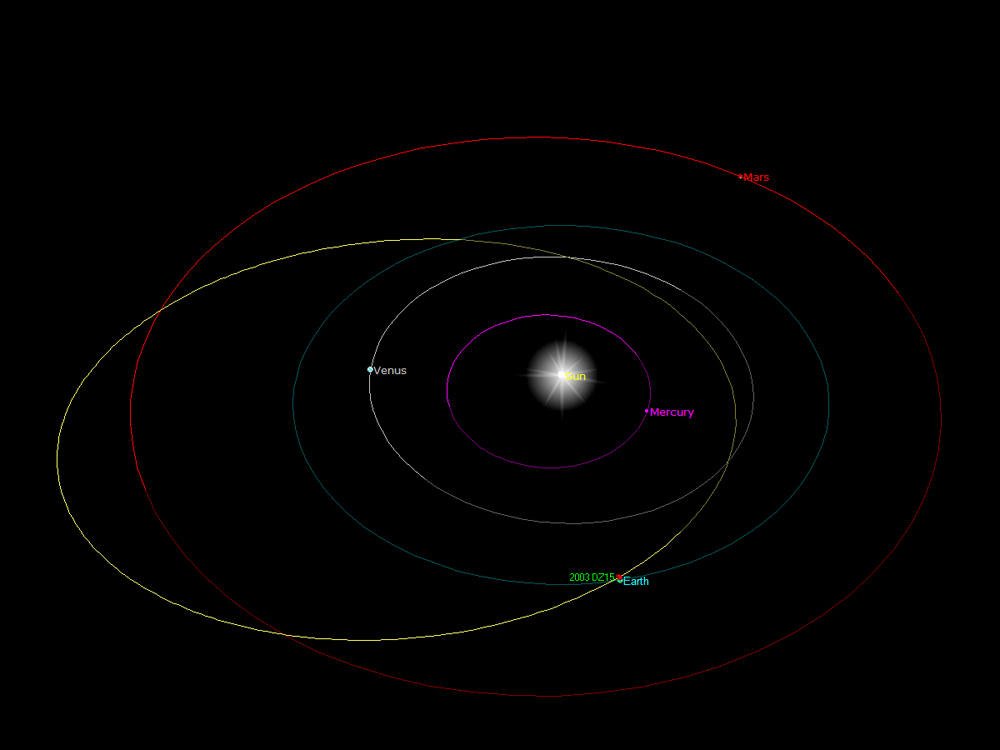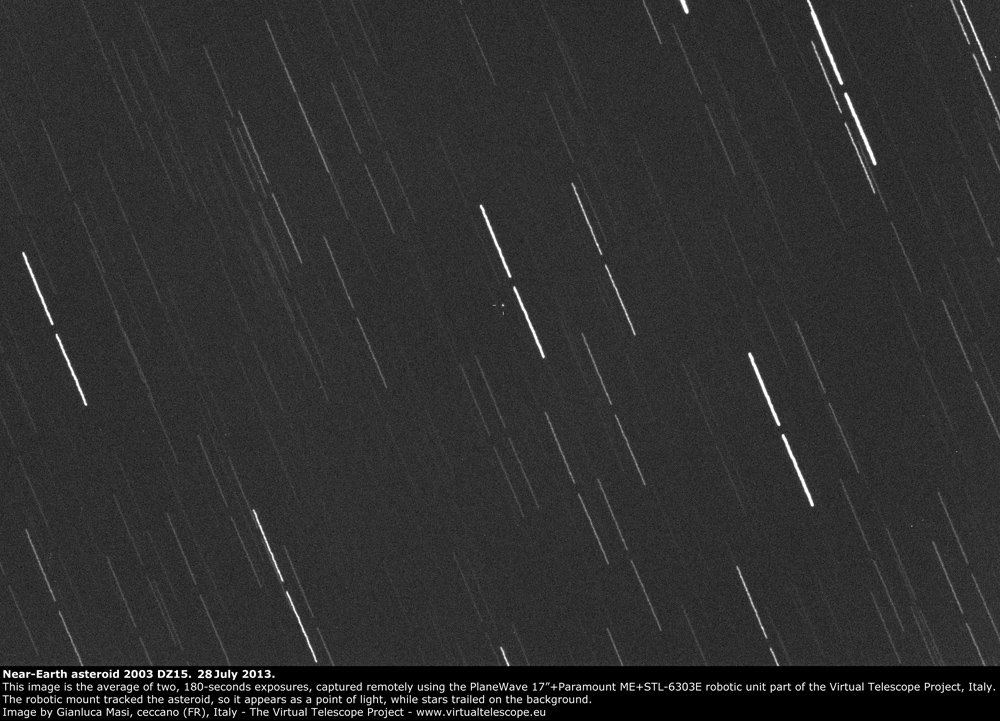
An asteroid as large as five football fields will zoom by Earth tonight, and you can watch the close approach live from the comfort of your home.
The near-Earth asteroid 2003 DZ15 will come within 2.2 million miles (3.5 million kilometers) of our planet — about nine times farther than the distance between Earth and the moon — tonight (July 29) at 8:37 p.m. EDT (0037 GMT on July 30). There is no chance that 2003 DZ15 will strike Earth on this pass, scientists say.
The online Virtual Telescope Project will stream live footage of 2003 DZ15 beginning at 6 p.m. EDT (2200 GMT) tonight. The webcast will use views from a powerful telescope in Ceccano, Italy, along with live commentary by astrophysicist Gianluca Masi, who runs the Virtual Telescope Project. You can watch the feed of 2003 DZ15's flyby here on SPACE.com, or follow it at the Virtual Telescope Project's site here: http://www.virtualtelescope.eu/webtv/

The 500-foot-wide (152 meters) asteroid will be too faint for most skywatchers to observe from their backyards, but folks can get a good look on their computer screens. Despite its large size, 2003 DZ15 is still far enough from Earth that it appears as a pinprick of light against a star field as seen by the Virtual Telescope Project instrument.
Follow Mike Wall on Twitter @michaeldwall and Google+. Follow us @Spacedotcom, Facebook or Google+. Originally published on SPACE.com.
Get the Space.com Newsletter
Breaking space news, the latest updates on rocket launches, skywatching events and more!
Join our Space Forums to keep talking space on the latest missions, night sky and more! And if you have a news tip, correction or comment, let us know at: community@space.com.

Michael Wall is a Senior Space Writer with Space.com and joined the team in 2010. He primarily covers exoplanets, spaceflight and military space, but has been known to dabble in the space art beat. His book about the search for alien life, "Out There," was published on Nov. 13, 2018. Before becoming a science writer, Michael worked as a herpetologist and wildlife biologist. He has a Ph.D. in evolutionary biology from the University of Sydney, Australia, a bachelor's degree from the University of Arizona, and a graduate certificate in science writing from the University of California, Santa Cruz. To find out what his latest project is, you can follow Michael on Twitter.









